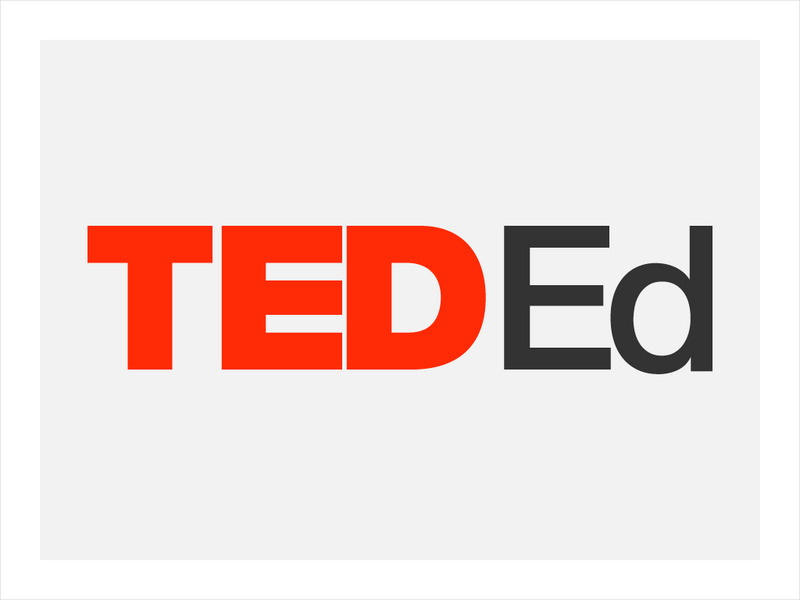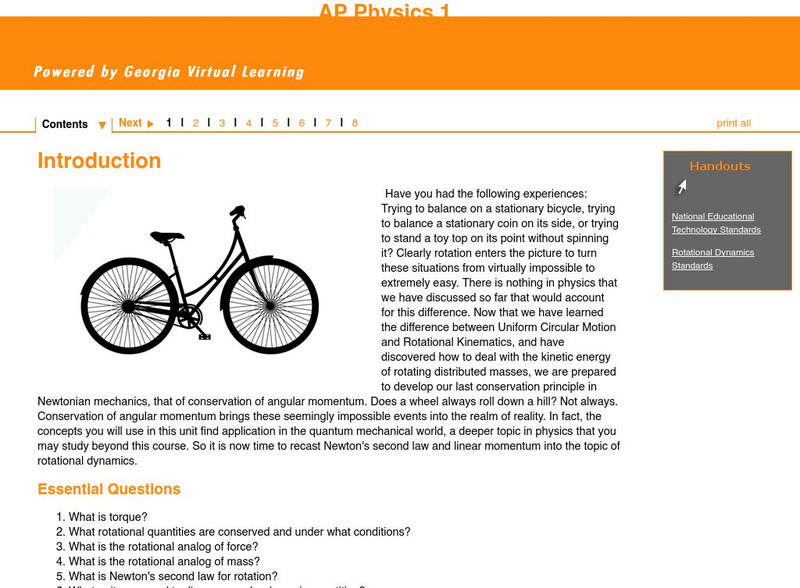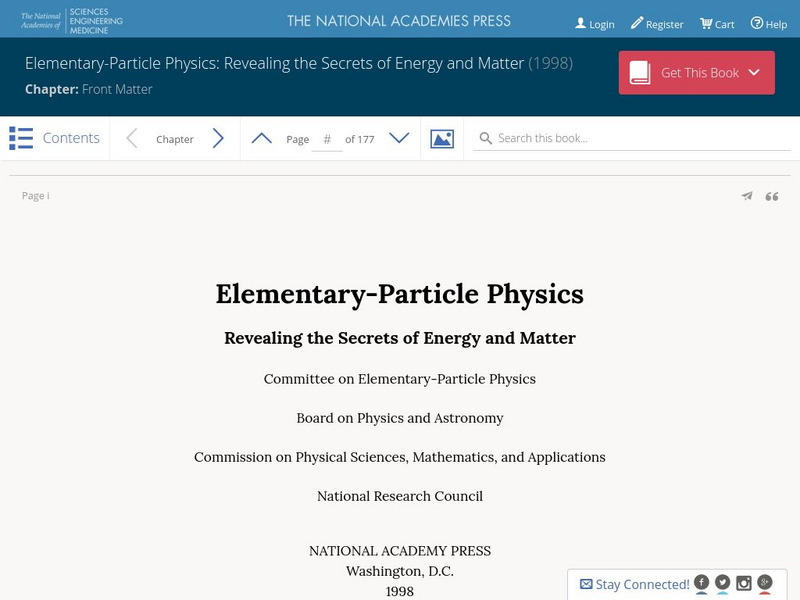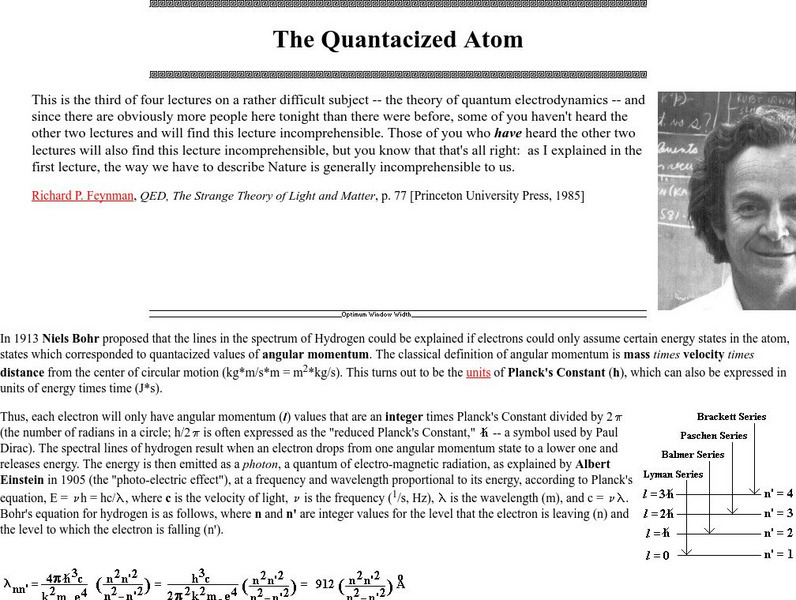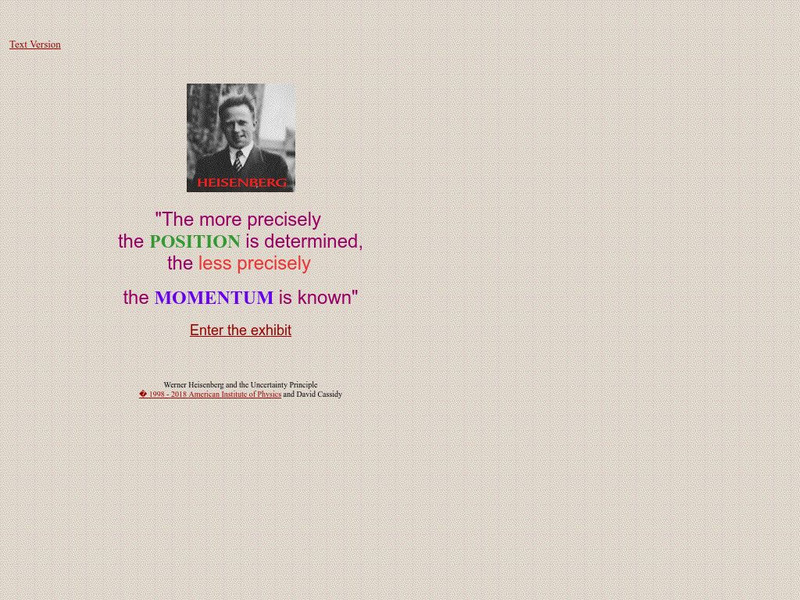Hi, what do you want to do?
Science4Fun
Science4 Fun: Richard Feynman
Brief biographical sketch of scientist Richard Feynman whose contributions include the Manhattan Project, quantum electrodynamics, and superfluidity.
Open Curriculum
Open Curriculum: Rules of Randomness
Discuss methods of working with probabilities and quantum physics in this article.
TED Talks
Ted: Ted Ed: What Is the Heisenberg Uncertainty Principle?
The Heisenberg Uncertainty Principle states that you can never simultaneously know the exact position and the exact speed of an object. Why not? Because everything in the universe behaves like both a particle and a wave at the same time....
National High Magnetic Field Laboratory
Magnet Academy: Timeline of Electricity and Magnetism: 1900 1909
Albert Einstein publishes his special theory of relativity and his theory on the quantum nature of light, which he identified as both a particle and a wave. With ever new appliances, electricity begins to transform everyday life.
Georgia Department of Education
Ga Virtual Learning: Ap Physics 1: Rotational Dynamics
Students learn about the Newtonian mechanics principle of conservation of angular momentum and the application in the quantum mechanical world.
Other
National Research Council: Elementary Particle Physics
The Committee on Elementary-Particle Physics, part of the U.S. National Research Council, presents this massive report on particle physics. It's a definitive document. Surprisingly readable, totally detailed. Start with the Table of...
American Association of Physics Teachers
Com Padre Digital Library: Open Source Physics: Rectangular Well Superposition
A simulation that displays the 2D evolution of the position-space of a wave in an infinite 2D rectangular well.
Famous Scientists
Famous Scientists: Homi Jehangir Bhabha
This article discusses the life and scientific accomplishments of Homi Jehangir Bhabha.
University of Colorado
University of Colorado: Physics 2000: Spectral Lines
Several pages from an excellent site which describe the science of spectroscopy. The unique atomic emission (and absorption) line spectrum of elements are illustrated and explained. Includes a Java applet depicting the quantum energy...
Science Struck
Science Struck: What Is Gravity and How Does It Work
A very detailed look at gravitational force and the many theories that have been put forward to try to explain it. Includes lots of illustrations.
CK-12 Foundation
Ck 12: Flex Book Textbooks: Chemistry Second Edition
[Free Registration/Login may be required to access all resource tools.] A complete, web-based, multi-media textbook covering a wide variety of Chemistry concepts.
Friesian School
Proceedings of the Friesian School/the Quantacized Atom
A very lengthy page from friesian.com discussing Bohr's theory of electronic energy levels and the explanation of commonly observed atomic emission line spectra. The concept of a photon and Einstein's observation of the photoelectric...
TED Talks
Ted: Ted Ed: How Does Your Smartphone Know Your Location?
GPS location apps on a smartphone can be very handy when mapping a travel route or finding nearby events. But how does your smartphone know where you are? Wilton L. Virgo explains how the answer lies 12,000 miles over your head, in an...
University of Colorado
University of Colorado: Physics 2000: Schrodinger's Atom
A simple dialogue to explain quantum theory and the Schrodinger equation. Includes several java applets.
University of Colorado
University of Colorado: Physics 2000: The Pauli Exclusion Principle
This site from the University of Colorado at Boulder has great information on the Pauli Exclusion Principle. Pictures are provided along with links to additional information. The information provided is not in-depth and it is...
PBS
Pbs: People and Discoveries
At this PBS site there is a biography of the Austrian physicist Erwin Schrodinger who lived from 1887 until 1961.
Other
Wave Mechanics: Prince Louis De Broglie
A brief explanation of Louis de Broglie's original problem with the wave nature of the electron. With links to his original paper on the subject and an animated graphic of the wave.
American Association of Physics Teachers
Com Padre Digital Library: Open Source Physics: Circular Well Model
This downloadable java simulation models the 2D energy eigenstates of a particle trapped in a very deep two-dimensional circular well.
Other
American Institute of Physics: Werner Heisenberg and the Uncertainty Principle
This resource is an online exhibit covering Heisenberg's physics, career, personal, and political life.
Stanford University
Stanford Univ/gravity Probe B/relativity Q&a
Click "Relativity Q & A". Over 200 questions and answers dealing with relativity (special and general), answered by NASA scientist Dr. Sten Odenwald. Answers are generally one paragraph, very clear and coherent.
University of Colorado
University of Colorado: Physics 2000: Bec: What Is It?
This is an understandable tutorial which guides the viewer through the innovations which led up to the verification of Bose-Einstein Condensation (BEC) in 1995. Follow the "Next," link at the bottom of the page to explore the following...
University of Colorado
University of Colorado: Ph Et Interactive Simulations: Lasers
Learn about absorption and emission by creating a laser. Pump the chamber with a photon beam, and manipulate the energy states of the laser's atoms to control its output.
University of Colorado
University of Colorado: Ph Et Interactive Simulations: Models of the Hydrogen Atom
How did scientists figure out the structure of atoms without looking at them? Try out different models by shooting light at the atom. Check how the prediction of the model matches the experimental results.
University of Colorado
University of Colorado: Ph Et Interactive Simulations: Blackbody Spectrum
How does the blackbody spectrum of the sun compare to visible light? Learn about the blackbody spectrum of the sun, a light bulb, an oven, and the earth. Adjust the temperature to see the wavelength and intensity of the spectrum change....
Other popular searches
- Quantum Mechanics Atom Model
- Quantum Mechanics Chemistry
- Quantum Mechanics Hertz
- Quantum Mechanics Atom
- Quantum Mechanics K 8
- Quantum Mechanics Worksheets







